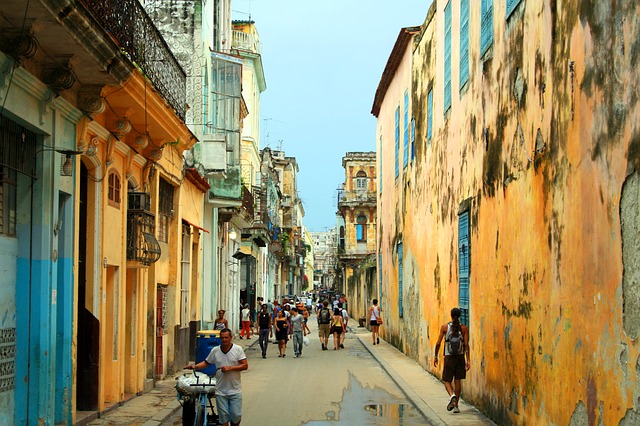Editor’s note: This is part one of an ongoing Soundbytes series, “Cuba: Miami’s Island of Opportunity,” exploring the potential impacts that relations with Cuba will have on Miami.
Sandy beaches, fruity drinks, swanky hotels, salsa music and a sunshine-filled escape from the routine. It’s why almost 15 million people visit Miami and its beaches each year. But for all the growth underway in Miami’s tourism sector, there’s a big unknown lurking 90 miles to the south that has the potential to eat into the Magic City’s market share.
As restrictions on travel to Cuba are gradually eased, there’s been much speculation about tourists from the U.S. and around the world bypassing Miami in favor of the Forbidden Island. Cuba’s lack of a sophisticated tourism infrastructure has hindered the country’s ability to compete for visitors up to now – only 3 million people traveled to the island last year – but a series of recent policy changes indicates change is on the way.
Within the past month, we’ve seen the U.S. announce that commercial airlines will begin regular flights to the island this year, grant Carnival Cruise Lines permission to sail from Miami to Havana, and permit Starwood and Marriott to operate Cuban hotels. It won’t be long before the luxury resort developers, nightclub owners, and celebrity chefs arrive to transform Havana’s Malecón into Collins Avenue of the Caribbean.
Expanded travel to Cuba can be perceived as Miami’s worst nightmare, but it can also be a dream come true if South Florida’s tourism sector approaches the island as a complement – not a competitor.
The same way visitors to Hong Kong and Spain’s southern coast side trek to Macau or Morocco for a day or two, Miami has an opportunity to brand itself as the natural jumping-off point for short trips to Cuba.
There’s evidence this process is already in motion as local officials contemplate regular ferry service originating from Port Miami. There’s even been an emotional debate weighing the pros and cons of welcoming a Cuban consulate to Miami Beach following Mayor Philip Levine and Commissioner Ricky Arriola’s recent trip to the island.
All of this speculation is just the beginning. Before long, it’s feasible that South Florida restaurateurs will one day open Havana outposts, international hotel brands will offer packages including stays in both Miami and Cuba, and our arts institutions will begin organizing cultural-exchange trips.
Of course, cracking into the Cuban market is a high-risk, high-reward proposition. As Bilzin Sumberg attorney Javier Aviñó explains, “The system in Cuba is completely different from what we’re used to. It’s all government controlled, so you don’t have a lot of recourse if a deal goes bad.”
“Yes, there are opportunities, but hold your horses,” says Eddy Arriola, chief executive of Apollo Bank in Miami. “If the Castros die, almost immediately the dominoes start to fall, but who’s in charge? It becomes easier to go in there, but by how much?”
Miami accountant Alan Lips of Gerson Preston Robinson puts it even more bluntly: “Investing in Cuba today makes the wild, wild West look tame.”
Risks aside, one thing is for certain: the number of Americans who traveled to the island surged 77 percent last year even before the commercial flights, U.S. hotel operators and cruises arrived. Given this growth, it would be wise for South Florida’s tourism leaders to begin contemplating how they will brand Miami and Cuba as an ideal option for travelers seeking a Cosmopolitan-meets-the-Caribbean getaway.
Part two of “Cuba: Miami’s Island of Opportunity?” will analyze the potential relationship between Miami’s real estate community and its island neighbor to the south.









 See More Blogs
See More Blogs
Comments